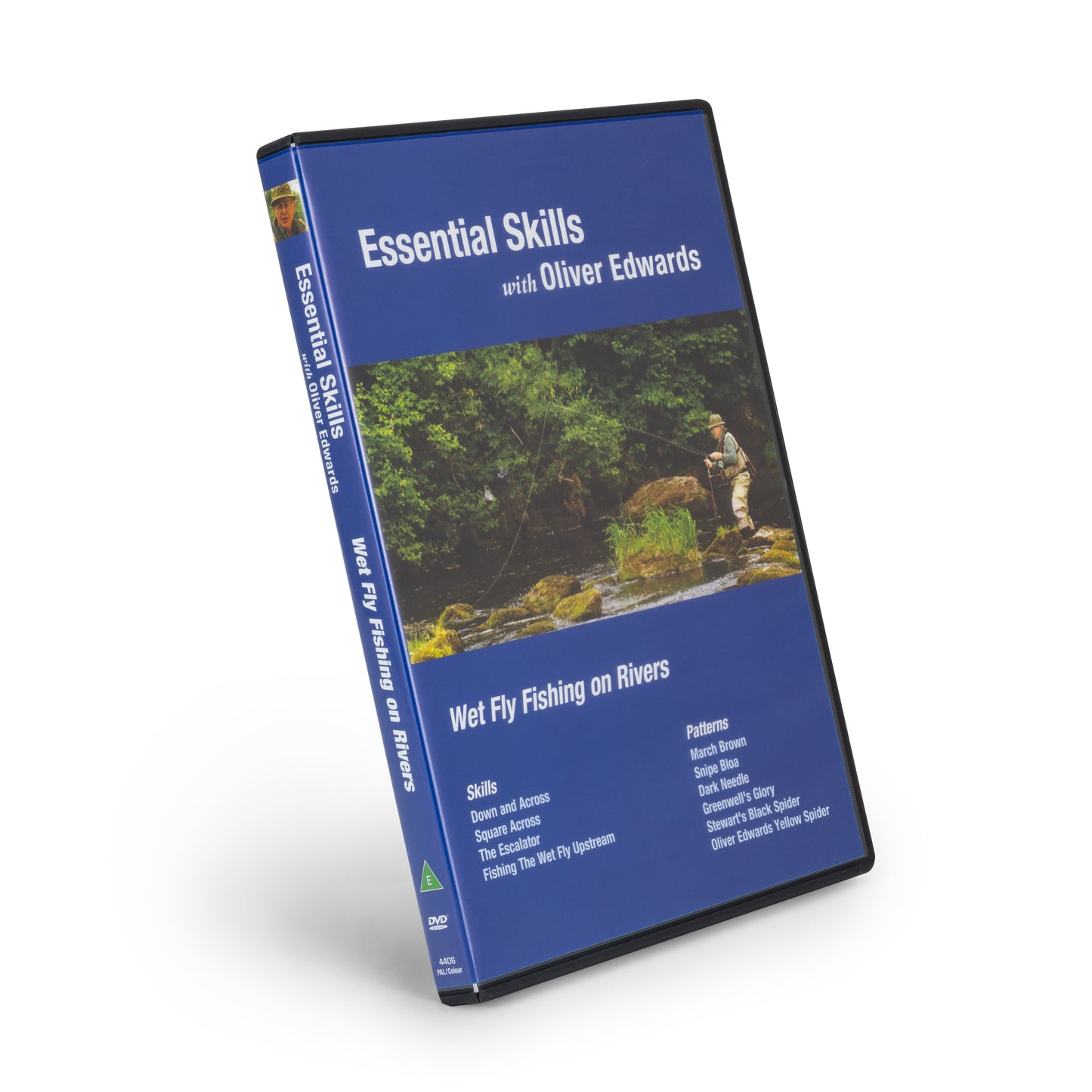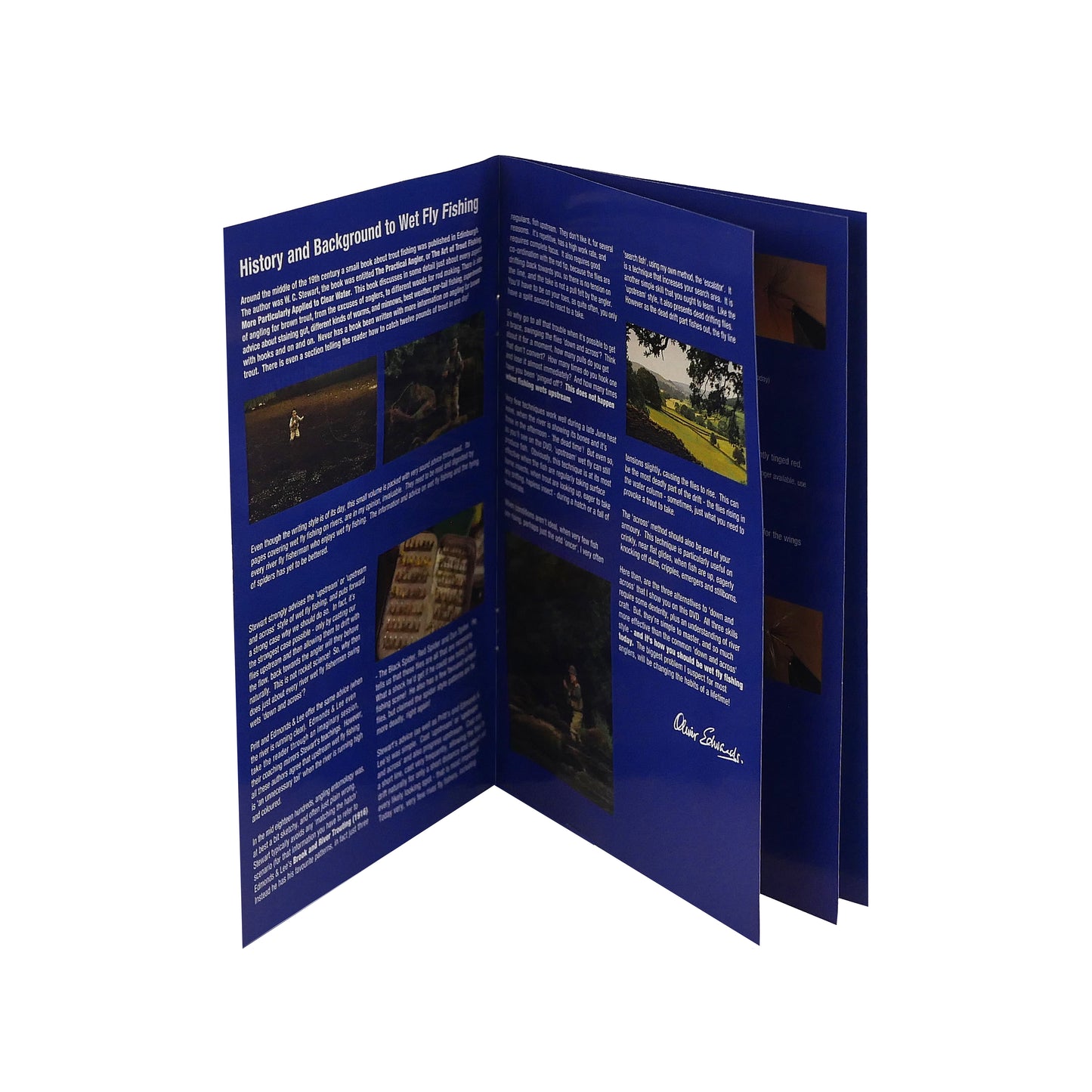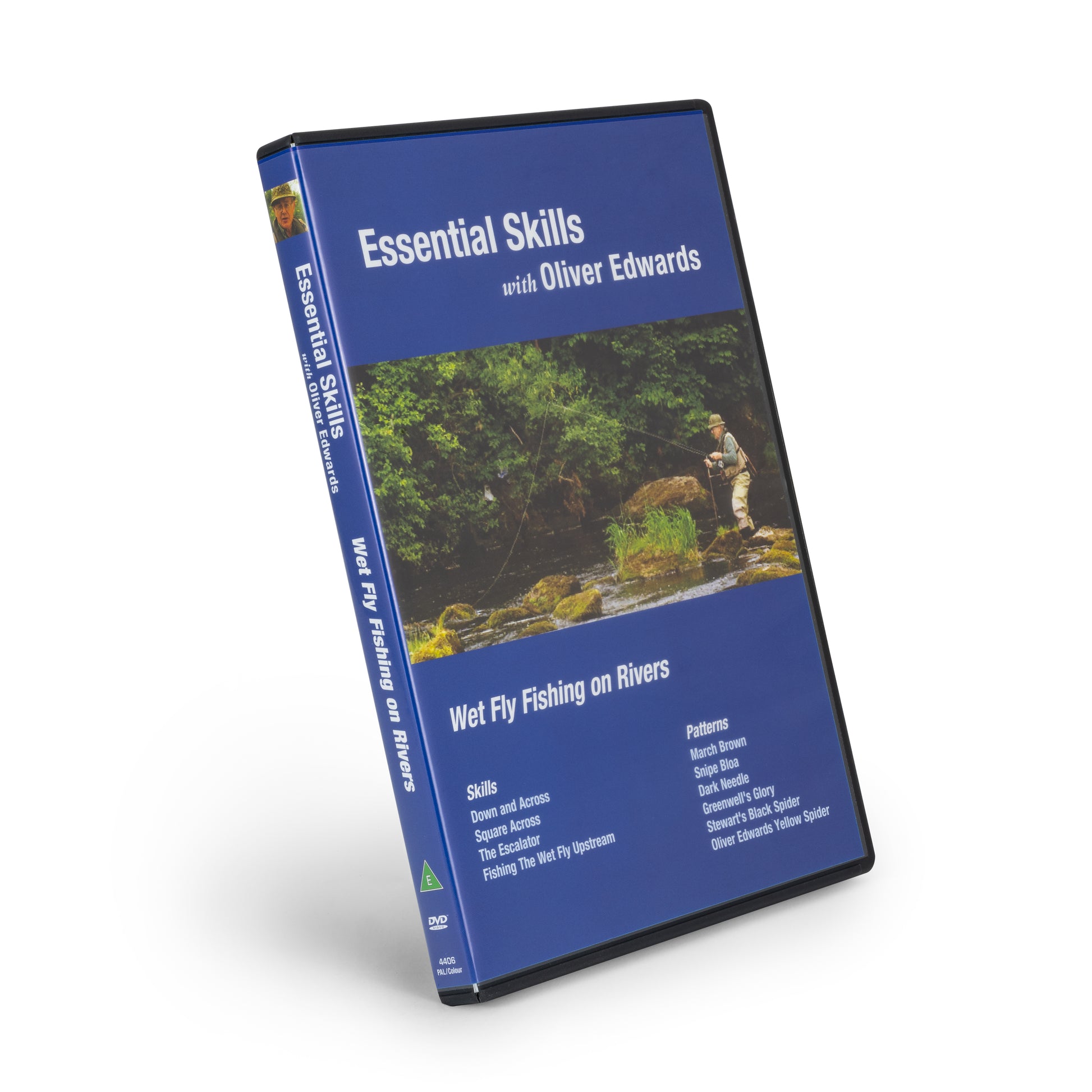Essential Skills
Wet Fly Fishing on Rivers - Run Time 1 hour 45 mins
Wet Fly Fishing on Rivers - Run Time 1 hour 45 mins
Couldn't load pickup availability
Learn Wet Fly Fishing with Oliver Edwards
The key to successful wet fly fishing is letting the flies 'dead drift'. In this DVD I show you the three key techniques.
The 'across' method - I find this technique particularly effective on crinkly, near flat glides, when fish are looking up, eagerly knocking off duns and emergers.
'The Escalator' A technique that I have developed over the years but is an easy style to master, increases your search area and imparts a lift to the flies as the drift fishes out.
And the 'upstream' style of wet fly fishing. I love this short line upstream style, it has a high work rate and requires complete focus. However, the flies fish naturally, in a dead drift. So if you want to up your catch rate, stop facing downstream!
A Brief History and Background to Wet Fly Fishing
There are many techniques that I show you in this DVD that go back well over 100 years. They are just as effective then as they are now. I've added a few of my own twists like the 'escalator' technique.
Around the middle of the 19th century a small book about trout fishing was published in Edinburgh. The author was W. C. Stewart, the book was entitled The 'Practical Angler', or 'The Art of Trout Fishing, More Particularly Applied to Clear Water'. This book discusses in some detail just about every aspect of angling for brown trout.
Even though the writing style is of its day, this small volume is packed with very sound advice throughout. Its pages covering wet fly fishing on rivers, are in my opinion, invaluable. The information and advice on wet fly fishing and the tying of spiders has yet to be bettered.
Stewart strongly advises the 'upstream' or 'upstream and across' style of wet fly fishing, and puts forward a strong case why we should do so. In fact, it's the strongest case possible - only by casting our flies upstream and then allowing them to drift with the flow, back towards the angler will they behave naturally. So, why then does just about every river wet fly fisherman swing wets 'down and across'?
Pritt and Edmonds & Lee offer the same advice (when the river is running clear). Edmonds & Lee even take the reader through an imaginary session, their coaching mirrors Stewart's teachings. However, all these authors agree that upstream wet fly fishing is 'an unnecessary toil' when the river is running high and coloured.
In the mid 1800s, angling entomology was, at best a bit sketchy, and often just plain wrong. Stewart typically avoids any 'matching the hatch' scenario (for that information you have to refer to Edmonds & Lee's Brook and 'River Trouting' (1916). Instead he has his favourite patterns, in fact just three - The Black Spider, Red Spider and Dun Spider. He tells us that these flies are all that are necessary. What a shock he'd get if he could see today's fly fishing scene! He also has a few favoured winged flies, but claimed the spider style patterns are far more deadly, right again!
Very few techniques work well during a late June heat wave, when the river is showing its bones and it's three in the afternoon - 'the dead time'! But even so, as you'll see on the DVD, 'upstream' wet fly can still produce fish. Obviously, this technique is at its most effective when the fish are regularly taking surface borne insects, when trout are looking up, eager to take any drifting, hapless insect - during a hatch or a fall of terrestrials.
When conditions aren't ideal, when very few fish are rising, perhaps just the odd 'oncer', I very often 'search fish', using my own method, the 'Escalator'. It is a technique that increases your search area. It is another simple skill that you ought to learn. Like the 'upstream' style, it also presents dead drifting flies. However as the dead drift part fishes out, the fly line tensions slightly, causing the flies to rise. This can be the most deadly part of the drift - the flies rising in the water column - sometimes, just what you need to provoke a trout to take. The 'across' method should also be part of your armoury. This technique is particularly useful on crinkly, near flat glides, when fish are up, eagerly knocking off duns, cripples, emergers and stillborns.
Here then, are the three alternatives to 'down and across' that I show you on this DVD. All three skills require some dexterity, plus an understanding of river craft. But, they're simple to master, and so much more effective than the common 'down and across' style - and it's how you should be wet fly fishing today. The biggest problem I suspect for most anglers, will be changing the habits of a lifetime!
Contents Include
- Booklet with Backstory and Key Fly Recipes
Wet Fly Fishing Techniques Tutorials
-
Down and Across
-
Square and Across
-
The Oliver Edward' Escalator Technique
-
Fishing the Wet Fly Upstream
Tying Wet Flies and Spiders
-
March Brown
-
Snipe Bloa
-
Dark Needle
-
Greenwell’s Glory
-
Stewart’s Black Spider
-
Oliver Edwards’ Yellow Spider
DVD Regions
DVD Regions
DVDs are produced in both PAL (European) and NTSC (US) television formats and all DVD regions are supported. We will dispatch your DVDs in the format and region code that corresponds to your shipping address.
Shipping
Shipping
Packages are sent Royal Mail 1st class within the UK or by Airmail if being shipped outside the UK. Packages over £60 are sent either signed, or tracked / signed for delivery.
As a guide, post and packing for a single DVD to a destination on the UK mainland or Northern Ireland costs £1.99, a full set of 8 DVDs will be sent signed for delivery in the UK, the post and packing is £4.99.
International post and packing ranges from £3.99 up to £16.99 for the international tracked and signed for service for orders over £60.
Delivery times vary depending on where the goods are being sent, we cannot guarantee delivery time; rough guide for the UK is 1 to 3 days from dispatch. International orders 5 to 12 business days from order depending on location.
Postage is calculated by weight and destination at checkout.
Learn-to-flyfish endeavour to ship orders by the following working day (working day Monday to Friday). Please note - exceptionally busy times, e.g. Christmas, Bank Holidays, first day after the weekend, there could be a delay with dispatch depending on the volume of orders.
You will receive an email confirming when your order is physically dispatched. (Make sure when ordering your email is correct.) If no Email has been received within 48 hours check your Spam Folder.
Force Majeure. Learn-to-flyfish will not be liable for performance delays nor for non-performance of 3rd party due to causes beyond reasonable control.
If you have any questions, please contact us by email info@learn-to-flyfish.com
Last updated 15 06 22






